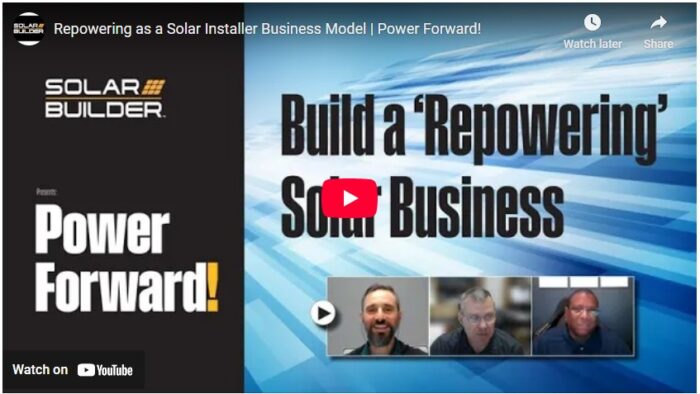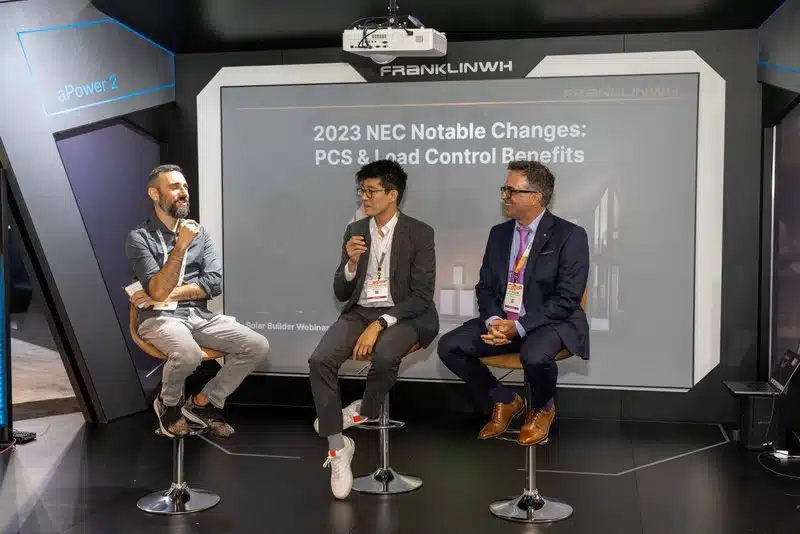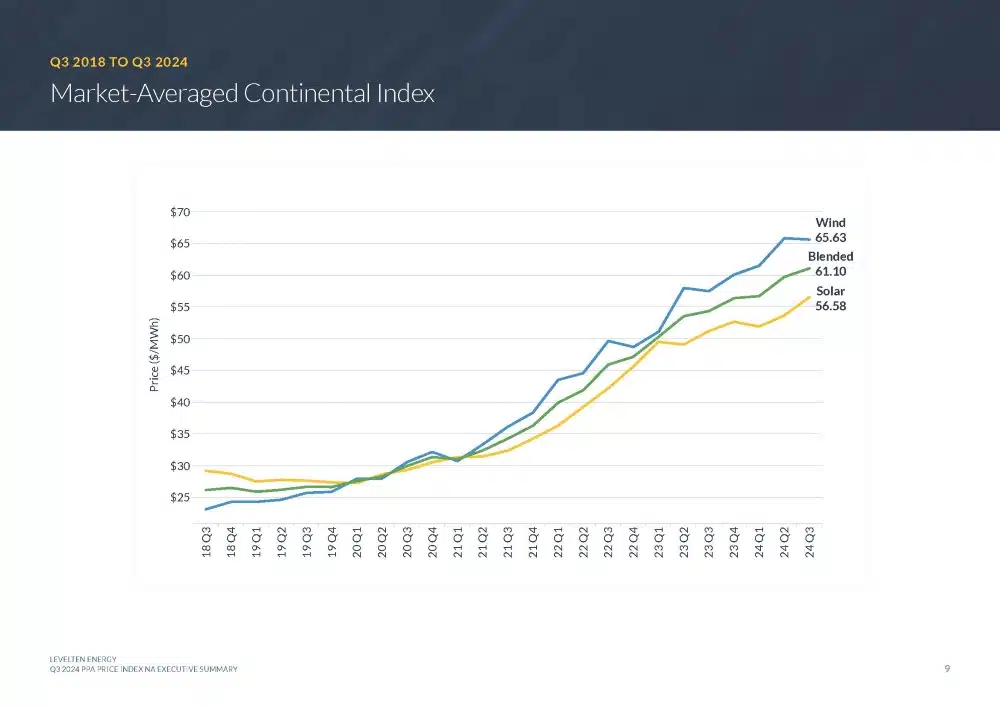Video: Repowering as a Solar Installer Business Model | Power Forward!

The residential solar market has changed, which means residential solar business models need to change too. Over the next few episodes of Power Forward! we’ll discuss some actionable strategies for restructuring your approach so that your solar installation business can be more resilient in the years ahead.
To kick things off we’re zooming in on the concept of “repowering,” and how you can turn that into a profit center, with Travis Walker, Director of Business Development at BayWa r.e., and Corey Garrison, CEO of SouthFace Solar & Electric in Arizona.
- 0:52 – What services should be offered by solar installer’s “service department”
- 3:32 – How to start pursuing solar repowering jobs
- 5:54 – How to sort a list of past customers for repowering potential
- 8:08 – The value of customer service agreements
- 9:01 – The economics of solar repowering: What’s my margin?
- 13:39 – Working with new (unhappy) customers with stranded systems
- 15:33 – Challenges or downsides to repowering jobs?
- 18:13 – Three ways to approach repowering as a line of business
- 22:16 – Hardware considerations when repowering.
Watch the full conversation above, or jump to any section below. You can also listen to the full episode in the podcast player of your choice. Apple Podcast | Spotify | Podbean. Here are some highlights.
How to start pursuing solar repowering jobs
Crowell: How are you generally pursuing these repowering jobs? Is this going through your old customer database and following up? Is it advertising to homeowners that have orphaned systems, where the original installer is gone?
Garrison: For us, it’s all of the above. When we do repowering, we have to pull many different sources. Online marketing is still king in a lot of the stuff we do, doing a little behavioral marketing in the Facebooks of the world so we can like really narrow down the target that we’re after.
“Because with repowering, the beauty of these type of jobs is that you’re dealing with customers that have already bought in and drank Kool-Aid so to speak. They have an investment sitting there, and it’s either not working as efficiently or not working at all. And then you have the companies out there that collate a list of their orphan systems. Finance companies have a ton of orphan systems, and they will pay to go out to inspect and then put together a proposal.”
Walker: “Another smart way that we’ve seen from various installers is partnering with real estate agents or inspectors as a lead opportunity. A lot of times, they may be seeing these opportunities that are just not available to us, and they see the frustration that the end customer is having. Being able to refer someone good to those projects is really great.
Repowering is just one part of a robust service agreement
Garrison: “For us, we’re trying to get a service agreement with them, usually on an annual basis to where they feel more committed to us and we feel more committed to them. So, deepening that relationship with the customer. Therefore, if they do have an issue, we’ll be the first they call. It also allows us to get them to opt into a drip campaign where we can get a little bit of information out to them. ‘Would you like to see a system diagnostic of how your system’s performing?’ Customers are extremely receptive to that, especially if we’re talking about power that they may be missing.”
Crowell: “So, for a repowering job, do you feel like … if you have opted them in, and are just generally keeping touch with them, and doing your annual services, that over a repowering opportunity just naturally comes up?”
Garrison: “Correct. I think that’s more of the tack that we’ve been taking. Especially our own customers, if we have agreements in place with them, we’re trying to let that organically happen as much as possible.”
Economics of solar repowering jobs
Crowell: “How much might I be replacing in a system to repower it for customers? And what is your margin on that? Is it solely the inverter and getting things back up because there’s a something faulty there? Or is it adding and replacing lower performing modules with higher power, more efficient modules?
Garrison: “I think it’s a combination of the two. Just replacing the inverter is the most the most used option. Replacing modules, we do that, around that 280 W module. It seems like if you go much smaller than that, it doesn’t make sense just to update the inverter because there’s so many more benefits you would get. It’s a cost-benefit analysis of how much are you going to pay me to figure out what’s wrong, versus how much are you going to pay if we just come in, take everything off and do a remove reinstall.
Walker: We’ve found that a few installers that work with us, they’ve pivoted their whole business model to just doing repowering and warranty work. So, when you talk about margins, they felt like the margins in the business were higher than what they could do for just solar in general — somewhere between 30% and 50% margins. Pretty good margins because of the amount of work that has to be done. We’ve seen installers say if you do one repower per week, you could be making $200,000 to $400,000 a year, depending on how big those systems are. Think of that at a 50% margin. It is definitely worth it getting into this.
Repowering supplementing business lost to ending the 25D tax credits
Walker: “The 25D tax credit that’s used on residential solar is in real jeopardy right now. Repowering, you can build a whole new revenue stream and not be worried about what’s going on with 25D. If you’re looking at your business and going ‘Oh man, we’re mostly a cash loan business. We don’t really do a ton of TPO.’ 25D could really hurt us if it goes away.’ Repowering is something that you might want to get into sooner than later to be able to supplement.”
Pick up the rest of the conversation right there:




